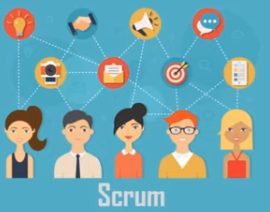"Development" Frameworks (Agile) : Scrum and Kanban (and differences)
---- this is about how you work in development teams (not software frameworks)
Scrum
Design |
|
Cycles/Cadence |
|
Releases |
|
Roles |
|
Commitments |
|
Team "types" |
|
Meetings |
|
Kanban - more flexible
-
developed by Toyota and is focused on visualization and the Kanban board we discussed before.
Continuous improvement, flexible processes --> less restricted than Scrum Framework
Design
- initial stage: can design as much or as little of entire system as team chooses
- iterative stage: again minimally increase functionality / limit changes
Cyles/Cadence
- None specified, more responsive --work on current needs see the current tasks on Kanban Board
Releases
- Releases are done when ready, no specified time or scope necessary
Roles
- none required
- Kanban Board can be shared by all
- developers assigned tasks in Kanban Board.
- HOWEVER, often there is a "leader/ agile coach" - who facilitates meetings and setups resources
Commitments
-
Based on team members skills and related needs, no minimum or maximum required.
-
Like Scrum estimate of work hours should be performed
Team "types"
-
Unlike Scrum no specification of team makeup (but, common sense should prevail --have what you need). Often Kanban teams may be specialized --having what they really need.

Meetings
-
No specified schedule --as needed
A comparison.......


